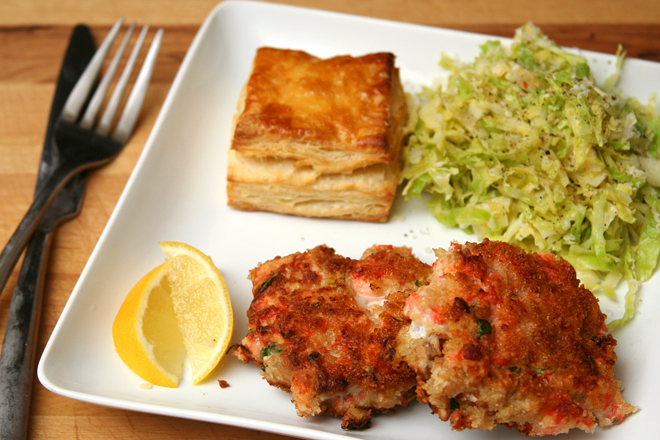I was excited to see that this month’s Daring Baker hosts, Mary and Sara, chose Julia Child’s french bread recipe. I’d heard of this recipe before and wanted to try it, but I didn’t want to buy the book it’s in, so this worked out great for me. The recipe is really long, and it sounds like that intimidated a few Daring Bakers. However, much of that length is because Julia’s writing style is so personal and friendly, and she gives a lot of detail. I really enjoyed making my way through her recipe. This is a quote I particularly liked, which also sums up my philosophy toward homemade bread: “It will turn into bread in the oven whatever happens, but you will have an easier time and a better loaf if you aim for ideal conditions.” Homemade bread is good even if you screw it up.

While I’m not a bread novice, I picked up a few tips from this recipe. One is to let the dough rise seam-side up and then flip it over before baking. This way the dough on top in the oven has no hardened crust that might impede the oven-rise. I also like the idea of using water to estimate what level the dough should rise to in its bowl.
All in all, this was great bread (although most of it is still in my overly stocked freezer). I have some other French bread recipes that I like at least as much, that have the added advantage of providing the baker with some more freedom in the timing. Probably the biggest difficulty of this recipe is finding the time to do it all in one day.
I made myself a tasty little sandwich with one of my mini-loaves, and now I’m trying to think of a great accompaniment to the baguette. I hear Julia Child’s coq au vin is amazing, and I do have the cookbook with that recipe. Although I hear that recipe is quite a project as well!
You can find the whole recipe here, and be sure to check out the rest of the Daring Bakers‘ bread!























































